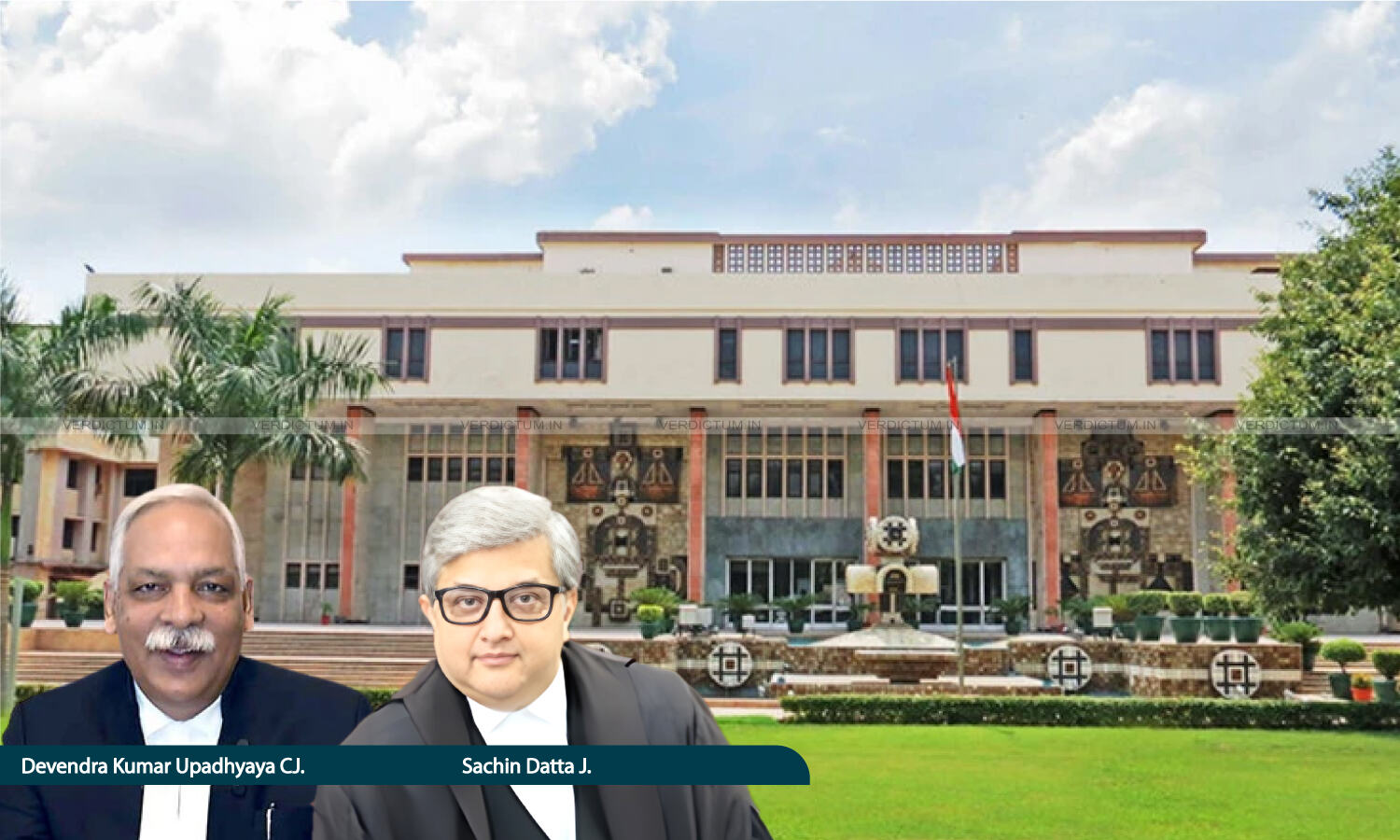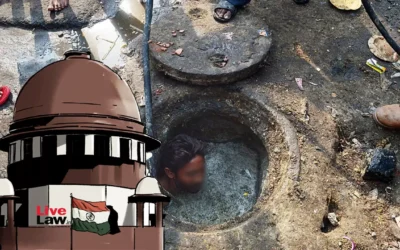Delhi High Court Directs NTA To Streamline Biometric Processes For NEET Exam

The Delhi High Court has directed the National Testing Agency (NTA) to streamline the biometric processes for the conduct of future NEET (National Eligibility cum Entrance Test) examinations.
The Court was hearing Appeals filed by NTA against the Judgment of the Single Judge passed in a Writ Petition preferred by some students.
A Division Bench of Chief Justice Devendra Kumar Upadhyaya and Justice Sachin Datta observed, “Moreover, biometric verifications are part of the mandatory security process, which ensure the integrity of the examination by preventing impersonation. Granting marks for delays in the process of biometric verification, that too for no fault of the appellant, would not be a justifiable course to follow.”
The Bench was of the view that granting even fractional ‘grace marks’ disrupts the inter se rankings, thereby impacting admission allotment across the country.
Senior Advocate Rupesh Kumar represented the Appellant while Senior Advocate Gautam Narayan represented the Respondents.
Facts of the Case
The Single Judge of the High Court had allowed a Writ Petition filed by the Respondent herein, and directed NTA-Appellant to award ‘grace marks’ to him by applying the ‘normalization formula’ approved by the Supreme Court in the case of Disha Panchal and Others v. Union of India & Ors (2018). It was further directed that the updated result/scorecard of the Respondent be communicated to him and uploaded within five days. It was also directed that the Respondent be assigned a supernumerary rank (with a view to ensure that his revised rank does not disturb the ranks of other candidates). In a similar case, the High Court issued similar directions in another Writ Petition filed by a female student.
The controversy arose before the Single Judge in the context of the grievance raised by the Respondents that time was lost during the course of conduct of National Eligibility cum Entrance Test (Undergraduate) 2025 Examination [NEET (UG) 2025 examination]which was attributable to acts of omission and commission by the personnel deployed at the examination venue. It was the case of the Respondent that although he had reached the examination centre within the stipulated time, disturbances and loss of time took place at the centre due to the failure of biometric verification, as a result of which there was a delay in authentication. During the course of the examination, the aggrieved student was interrupted to undergo Aadhar verification once again and re-submit the undertaking, as a result of which crucial time was lost.
Reasoning
The High Court after hearing the arguments from both sides, noted, “… there is merit in the contention of the learned counsel for the appellant that the difficulty in the biometric authentication of the concerned candidates in the present cases was attributable to the conduct of the concerned examinees (writ petitioners) themselves.”
The Court said that apart from the above aspect, there is also merit in the contention of the counsel for the Appellant that the Judgment in Disha Panchal case was rendered in a completely different context, and the dispensation created thereunder cannot be extended to this case.
“Furthermore, the grievance of the writ petitioners relates to delays caused by Aadhar based biometric authentication, a systemic security protocol, that is, integral to the conduct of NEET to prevent impersonation. The difficulty in biometric verification cannot be equated with Invigilators’ negligence and the other infrastructural shortcomings involved in Disha Panchal (supra)”it added.
The Court further observed that delays due to biometric authentication (of the kind encountered by the Respondents) are non-standardized and varied, making it impossible to quantify their impact and such lack of precision renders ‘normalization’ arbitrary and unscientific.
“Thus, there is no controversy that holding of re-examination for the writ petitioners, is no longer an available option in the facts and circumstances of the present cases. … Equally, it is wholly incongruous to apply the Disha Panchal principle in view of the facts and circumstances enumerated above”it remarked.
The Court also noted that there is also a larger issue which is concerning viz. the chaotic consequences of extending ‘marks improvisation’ for individual delays in biometric authentication for reasons not attributable to the testing agency and such an approach would open the floodgates to claims by candidates who experienced even minor technical delays in biometric authentication.
“Any such delay, besides being not attributable to the appellant, is not scientifically measurable, unlike in the case of Disha Panchal (supra). … The entire process of scrutinizing unverifiable claims based on visual perusal and extrapolation from CCTV coverage, and seeking to translate the same into ‘improvisation marks’, is an exercise that is inherently subjective. Undoubtedly, the same would undermine the finality and legitimacy of the results of the examination”it said.
The Court observed that the concept of “supernumerary rank” has no basis in the extant examination regulations and the insertion of a supernumerary rank, though intended to safeguard the rights of other candidates, in substance alters the inter-se-merit between candidates
“Counselling and seat allocation in NEET (UG) functions on a rigid rank regime. Inserting an additional rank, even with a suffix, would affect the inter-se cut off thresholds and the allocation sequence, thereby impacting the rights of other candidates. The assumption that assigning a supernumerary rank does not disturb the existing merit structure, is tenuous”it noted.
Conclusion
The Court was of the opinion that it would be imprudent to seek to ‘calculate’ the extent of time lost in individual cases, through visual impression gathered by perusing the CCTV coverage, and then proceeding to work out “improvisation marks/grace marks”.
“In the circumstances, this Court does not find the Disha Panchal (supra) methodology to be applicable / appropriate in the present cases. Consequently, the directions in the impugned order to the effect that the writ petitioners be awarded ‘grace marks’ by applying ‘normalization formula’ laid down in Disha Panchal (supra), and the other consequential directions, are set aside”it concluded.
The Court, therefore, directed the Appellant to streamline the biometric processes for the conduct of future examinations and agreed with the directions contained in the impugned Judgment to the effect that it would be apposite for the NTA to constitute a Grievance Redressal Framework to examine the complaints/grievances of candidates, in the first instance, in a time bound manner.
Accordingly, the High Court disposed of the Appeals.
Cause Title- National Testing Agency v. Satya Nishth & Ors. (Neutral Citation: 2025:DHC:6505-DB)
Appearance:
Appellant: Senior Advocate Rupesh Kumar, Advocates Pankhuri Srivastava, Sarica Soam, Alekshendra Sharma, and Aditya Kumar.
Respondents: Senior Advocate Gautam Narayan, Advocates Udayan Verma, Asmita Singh, Disha Joshi, T. SinghDEV, Abhijit Chakravarty, Anum Hussain, Sourabh Kumar, Sourabh Kumar, Tanishq Srivastava, Yamivastava, Yamini Singh, Vedant Sood, and Bhanu Gulati.

